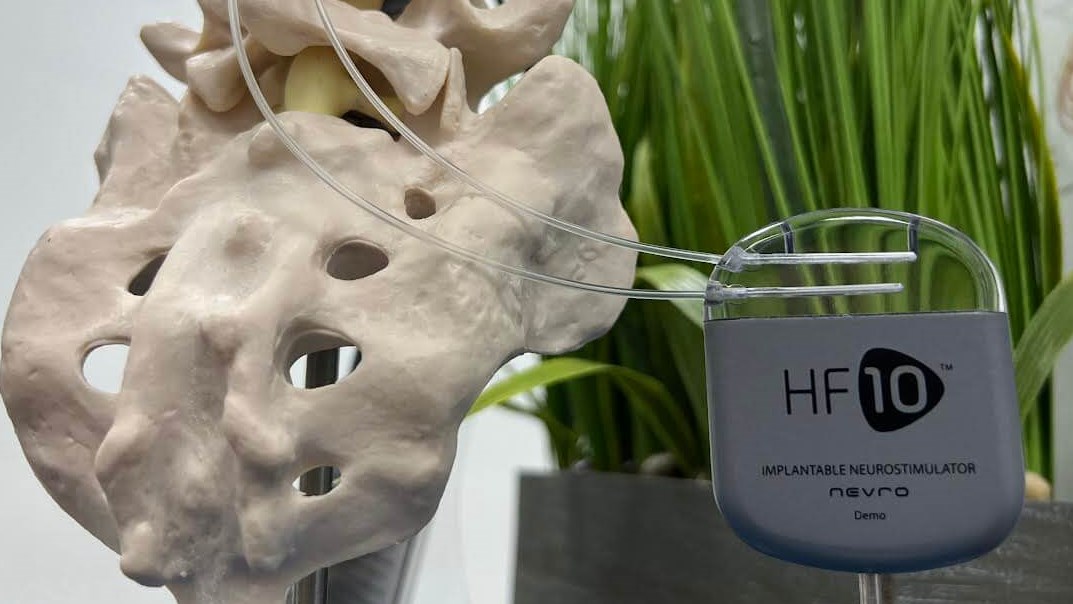Spinal Cord Stimulation: A Modern and Effective Solution for Chronic Pain
&srotate=0)
What is Spinal Cord Stimulation?
Spinal Cord Stimulation (SCS) is a therapeutic approach often used for chronic back and neck pain. Similar to radiofrequency ablations, SCS technology seeks to intercept the transmission of pain signals before they reach the brain, thereby reducing their perceived intensity. This approach is more invasive than radiofrequency ablation, though, as it utilizes an implantable device to deliver electrical signals to the spinal cord. These applied electrical signals modulate pain by interfering with nerve conduction.
This method is frequently indicated for patients who suffer from failed back surgery syndrome (FBSS), complex regional pain syndrome (CRPS), or neuropathic pain for which most minimally invasive strategies have proven ineffective.
Components: Understanding the SCS System
The spinal cord stimulator system has a few key components, including two electrode leads, connecting wire, the pulse generator, and a remote control. The electrode leads are implanted in the epidural space along the spinal cord and carry electrical signals from the pulse generator to the target nerves. The electrical pulses emit from electrodes dotted across the length of each lead, precisely targeting and modulating malfunctioning nerve activity. The pulse generator, usually implanted in the lower back or abdomen, generates these electrical signals. The parameters of the generator can be regularly adjusted by the remote controller to modify the intensity, frequency, and area of stimulation.
Preparation: Evaluating Eligibility for SCS
The decision to implant a spinal cord stimulator is not made lightly. Several qualifying, less invasive interventions should be explored before the SCS trial lasting two weeks is even considered. This trial period assesses the effectiveness of the device for the individual patient, and involves the temporary placement of leads in their epidural space and the fastening of a pulse generator to the outside of their body. The skin surrounding the generator is sterilized and covered in polyurethane film to protect the insertion point and path to the epidural space from external contamination.
Procedure and Recovery: Undergoing SCS Implantation
The surgery is conducted under general anesthesia and involves inserting the generator beneath the skin and ensuring leads remain in their proper place. The combined time for the two procedures is between 1.5 and 2.5 hours, and recovery from the implantation may take as long as 6 weeks. It is typical for device configuration and the adjustment of parameters to continue over subsequent months as the device is personalized to the patient’s pathology. Long-term management involves periodic check-ups, updating the device’s programming, and replacing the generator battery as needed.
Benefits and Risks: Evaluating SCS Effectiveness
There are multiple benefits of spinal cord stimulation that make it an attractive option for patients who have tried everything except surgery. The first and most important is a significant decrease in the intensity of chronic back or neck pain, which enhances an individual’s ability to function and reduces their reliance on pain medications. Between 47% and 74% of individuals with spinal cord stimulators report long-term success of pain modulation by at least 50%. Additionally, spinal cord stimulation is a reversible procedure because the device can be adjusted or removed as needed. However, there are risks such as rejection, device malfunction, or lead migration that can occur. Despite meeting eligibility criteria, not all patients will find SCS to be an effective intervention. This further demonstrates how the field of pain management is helpful to many yet still many breakthroughs away from being perfect.
If you're facing relentless chronic pain and have exhausted other options, consider booking a consultation with Dr. Kohler of Ospina Medical to explore if Spinal Cord Stimulation is the right path for you.
Author: Camden Rowe
Medically Reviewed By: Matthew Kohler, MD